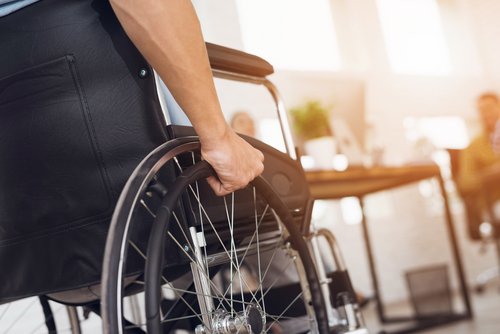Mobility Devices for People Who Have Lower-Limb Paralysis are Flawed, Online Survey Reveals

More investment and new technological developments are needed to assist people who have limited mobility because of lower-limb paralysis.
That was the major conclusion of an international study undertaken by ComRes on behalf of the Toyota Mobility Foundation.
Around the world, millions of people have lower-limb paralysis. In the majority of cases it is due to spinal cord injury, stroke, and multiple sclerosis.
Researchers at ComRes conducted an online survey March 9-26 that targeted people who currently use a wheelchair or mobility device, or have used one in the past five years for at least six months. A total of 575 individuals in the United States, United Kingdom, Brazil, India, and Japan participated in the study.
Results of the questionnaire revealed that 89% of the respondents experienced pain and discomfort caused by their mobility devices. Indeed, 45% said they experienced back pain at least once a day, and 22% said they have constant back pain. Also, 31% reported shoulder pain, and 29% neck pain, at least once a day.
The study also revealed that 29% of wheelchair users had repetitive strain injuries and 22% had pressure sores.
“This research expresses the urgent need for innovation in this area,” Ryan Klem, director of programs for Toyota Mobility Foundation, said in a press release “It’s surprising that with all of the technology we have today, we still have people in constant pain as a result of their mobility devices.
While it should be expected that assistance devices would make people’s lives easier, the reality revealed by this study is quite different.
About 49% of wheelchair users said they still need assistance when travelling. Also, 31% said they have to wait for multiple buses or trains to pass before they can enter one that has space to accommodate them. Nearly a quarter of the respondents (23%) say they have been declined entry on to public transport.
Furthermore, the use of a restroom was pointed to as a common challenge faced by wheelchair users, with 43% of the participants reporting difficulties finding accessible toilets when needed.
The survey showed that 30% of the respondents felt frustrated with their mobility device because it had an outdated design.
To have a better grasp of the needs of this population, the researchers asked what could be done to improve their daily lives. About 41% suggested the devices should move faster, and 37% said that they should facilitate daily tasks.
The respondents indicated the devices should have a design that should feel more natural, almost like an extension of their bodies, which could help them feel more confident and able to socialize, while also providing them the sensation of freedom and independence they need.
The results of this survey demonstrate there is still much to be done to improve the quality of life of this population. In line with this need, the Toyota Mobility Foundation, in collaboration with Nesta’s Challenge Prize Centre, launched the global Mobility Unlimited Challenge late last year.
The Mobility Unlimited Challenge wants to improve life for people with lower-limb paralysis by granting $4 million to innovative solutions for personal mobility devices.
“The comments we are receiving through social media show the kinds of developments that people want to see and we hope the Challenge will result in genuinely life-changing technologies,” Klem said.
Innovative devices that incorporate intelligent systems and novel solutions can enter the Challenge until August 15. The winners will be announced in Tokyo in 2020.
The Challenge also was designed to encourage a user-centered approach, and invites people with lower-limb paralysis across the world to take part in a global conversation about the types of mobility innovations they would like to see.
With the hashtag #MyMobilityUnlimited, participants will be able to have access to the views of wheelchair users and incorporate them in their projects.
“While the focus of this Challenge is lower-limb paralysis, we absolutely do expect that the technology developed as a result will be transferable and have the potential to improve the lives of a much wider group of people. This Challenge is about achieving impact, and for that reason, we needed to narrow the focus. However we recognize that people have a wide range of mobility needs and hope to be able to help them too,” said Charlotte Macken, program manager in the Centre for Challenge Prize.






